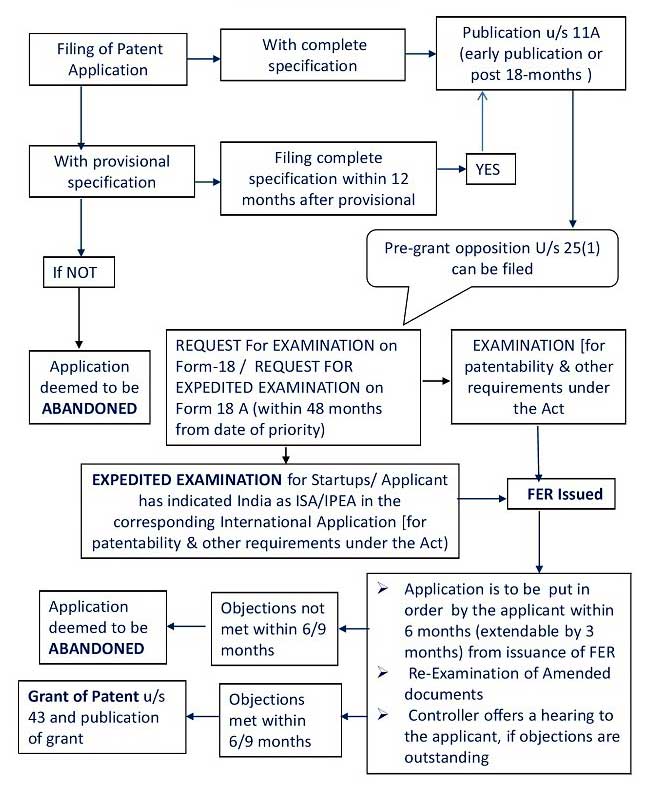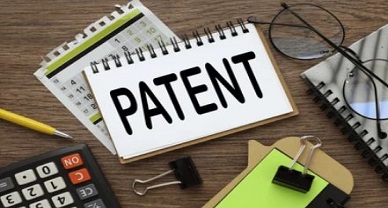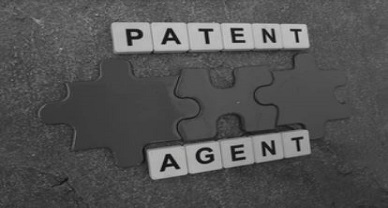Getting a Patent: Procedural Aspects
Patents give an exclusive right to the inventor for his invention. The invention can be a product or a process that provides, in general, a new way of doing something, or offers a new technical solution to a problem. To get a patent, technical information about the invention must be disclosed to the public in a patent application. The patent in its form gives the right to the inventor to commercially exploiting the invention to fetch the investment being incurred upon the R&D. This right also provides the owner an exclusive right to prevent others or stop others from commercially exploiting the patented invention. In other words, patent protection means that the invention cannot be commercially made, used, distributed, imported, or sold by others without the patent owner’s consent. The patent right is territorial in nature and does not have any international protection. This grant of protection of the patent is given for 20 years. Let’s understand the procedure of getting a patent along with the timeline and cost in India.
Procedure
The inventor should be very clear with the inventions which are not patentable. The inventions must not fall within Section 3(d) of the patents act. The inventor must draft the patent application in a manner that makes the claims easily understandable. The inventor has the privilege to file the provisional application to claim a priority date beforehand. The provisional application must disclose at least some information about the patent. All the information can be provided in the complete specification which has to be filed within 12 months. The complete specification must be very clear with regards to the inventive steps and the industrial applicability of the patent. After the filing of the complete specification, the publication of the Patent Application takes place in the Patent Journal issued by the Indian patent office. The Journal is published every week. The publication has to be done within 18 months from the Priority date/ date of Filing (whichever is earlier). For some applicants like that of PCT application, there are provisions for expedited examination. After the publication, the inventor must request for examination of the application. The examination is not an automatic process and the applicant needs to request for it which has to be done within 48 months from the Priority date/ date of Filing (whichever is earlier).
The draft and the report submitted to the officers in the patent office are thoroughly examined at this step. The examination reports i.e. First examination reports (FER’s) are being issued by the Indian patent office. At this step, there is a chance for the inventor to communicate his novelty or inventive step over any other piece of art found during the assessment. If there are any such objections then the applicant needs to respond to the objections within the stipulated time. The Patent Office will provide an Examination Report with reference to the Patentability Criteria and provides the First Examination Report (FER). The timeline associated with filing the response for the objections are raised in FER has to be submitted within 6 months of the date of Issuance of FER, extending to three months. After submission of the response to FER by the applicant, the Controller of Patent considers all the objections and check whether all the objections have been compiled or not. The controller then either issues a hearing notice and appoints a hearing or may grant a patent application and publish the patent application in the official journal accordingly. After the patent has been granted the inventor need to file the annuities fees which have to be paid throughout the life of the patent i.e. 20 years from the Priority Date / Date of Filing (whichever is earlier).
Timeline
The applicant needs to file the complete specification within 12 months from the date of filing the provisional application. After filing the complete application, the publication of the same will be done within 18 months from the date of priority/filing date whichever is earlier. The applicant needs to request for the examination within 48 months from the earlier filing date. After the examination and issuance of FER, the applicant gets 6 months, extended up to 3 months from the date of issuance of FER. Similarly, the pre-grant opposition can be filed by anyone at any point in time but before the grant of the patent. The post-grant opposition can be filed within one year from the date of publication of the grant of patent.
Cost
The cost for the patent varies from person to person. The Patent office charges different fees for individuals, small entity or others. On the application of patents accompanied by provisional and complete specification, the rates range from Rs. 1600 for an individual to Rs. 4000 for a small entity to Rs. 8000 for others. Similarly, the rates of the request of examination range from Rs. 4000 for an individual to Rs. 10000 for a small entity to Rs. 20000 for others. For expedited examination, it starts from Rs. 8000 to 60000 for others. The inventor who has been granted the patent has to fill the renewal fees that generally start from Rs. 800 to Rs. 4000 for 3rd year onwards and end up at Rs. 8000 to 40000 for the 20th year.
Patent Flow Chart
[Image Source: https://ipindia.gov.in/writereaddata/Portal/Images/pdf/Final_FREQUENTLY_ASKED_QUESTIONS_-PATENT.pdf]
The highly professional team at IPLF with all our support staff and attorneys has worked at different levels with clients. The IPLF team assists their clients globally in obtaining patents in India. The team has successfully provided the services from filing the patent to the grant of the patents. For obtaining the cost estimate for filing the patent in India, contact the IPLF today.
Author: Saransh Chaturvedi (an advocate) currently pursuing LLM from Rajiv Gandhi School of Intellectual Property Law (IIT Kharagpur). In case of any queries please contact/write back to us at support@ipandlegalfilings.com.



